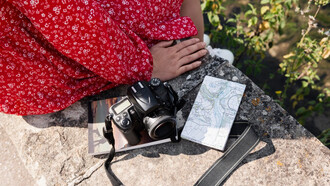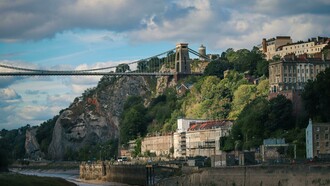The city of Safi has been qualified as a veritable "Moroccan capital of ceramics" since 1919 and until the present day.
This singular notoriety, the City of the Ocean, owes its amply to great craftsmen and master ceramicists who, with so much love for the profession and the sacrifices made, have been able to preserve this ancestral art which testifies to a great "genius" of man, ensures its transmission to rising generations and carries it beyond national borders. Thus, allowing Morocco, in general, and the city of Safi, in particular, to shine with a thousand lights during major exhibitions and fairs dedicated to craftsmanship.
The importance of ceramics in the history and daily life of the Safi people can be illustrated by the establishment of "Dar Sultan" in 1990 at the heart of one of the most emblematic monuments of Safi. It’s a space museum completely devoted to ceramics which was relocated into a new building at the heart of the Cité des Arts in Safi, a space called "National Museum of Ceramics".
Ultimately, the objective of the National Museum of Ceramics is to allow national visitors and foreigners to better discover these ceramic "treasures" while bringing together this heritage in a space worthy of importance.
The social and economic importance of ceramics in the socio-economic fabric of the city is not needed to be demonstrated anymore. Moreover, several historical and archaeological sources are unanimous on the fact that Safi is the "receptacle" of a pottery activity very rooted in history.
"The inhabitants of the city of Safi have combined, since their existence, between maritime resources and the manufacture of useful pottery objects, thanks to the availability of a high-quality raw material offered by the surrounding deposits".
Quantities of archaeological ceramics discovery in Safi
The national foundation of museums announced last month a "discovery of enormous quantities of archaeological ceramics in the site of Lalla Hniya Hamriya in 1994, constitutes a great scientific proof that Safi has known the ceramics industry at least since the Almoravid era, in the 11th century. This activity had lasted throughout the Middle Ages before it was stopped because of Portuguese colonization (1508-1541).
A historical document, dating since 1821, confirms that Safi once again became a ceramic reproduction centre, at least at the beginning of the 18th century, i.e. a century before the arrival of the master ceramicist Boujemaâ Lamali, making it known that the installation of this Maâlem in Safi has turned the history of ceramics upside-down not only in this city but throughout Morocco.
It is thanks to the school of ceramics that was founded in his workshop, the first of its kind in Morocco and Africa that Safi has become "the Moroccan capital of ceramics" for a century already.
Besides, Lamali's creative spirit has enabled him to make more than 450 objects between form and decoration, especially since it is thanks to the port of Safi that the ceramics of the City of the Ocean are known around the world.
After this success at national and international levels, it was decided in 1990 to set up in "Dar Sultan", a space completely dedicated to ceramics, before its relocation after the redevelopment of the National Museum of Ceramics and its inauguration in 2018.
The National Museum of Ceramics
The development of this space took place based on a revision of sonography having taken the form of a chronology: from prehistory, the Middle Ages, modern and contemporary times, as well as geographical distribution, given that some of the oldest ceramic pieces were found in the Moroccan Sahara.
The creation of the National Museum of Ceramics responds to the desire to restore consideration to Safi as a historic city with a rich and diverse heritage, in particular as regards pottery and ceramics capable of enabling it to establish itself as the essential capital of ceramics, starting in the 20th century.
A question of acquiring a documentary and museum collection of the various pieces and objects of pottery and ceramics of historical and anthropological importance and value, and of collecting, listing and exhibiting ceramic objects heritage of Morocco in a single building. This particular interest in the promotion of this ancestral know-how has resulted in the redevelopment of the National Museum of Ceramics in a new building (2016-2018) with an area of 900 m2 within the City of the Arts. , and including several exhibition rooms, a visitor reception area, in addition to administrative dependencies among others.
Ceramics museums spaces
This museum space, carefully arranged to ensure a better discovery of this centuries-old know-how, offers to see and appreciate a collection of some 150 pieces of ceramics and pottery, including archaeological objects of undeniable historical importance.
Thus, apart from the first room, which is arranged chronologically, the three large rooms are organized geographically, chronologically and artistically. The first room contains archaeological ceramics from prehistoric times 3800 BC, until the beginning of modern times (mid-16th century).
As for the second exhibition hall, it contains ethnographic ceramics from mountainous regions: the Rif, the Grand Atlas and the Middle Atlas, and from a Saharan village of Tamegroute. There is also the city's ethnographic ceramics from historic cities, such as Tetouan, Meknes and Fez (18th and 19th centuries).
As for the third room, it is devoted to two major centres of Moroccan ceramics, namely Fez and Safi. The right part is reserved for ceramics from Fez (19th and mid-20th centuries), while the left part is reserved for architectural and ethnographic ceramics from Safi (from the middle of the 19th century to the beginning of the 20th century).
The visit and immersion circuit in the heart of the history of ceramics ends with a flourish in room 4 of this museum space, an opportunity to finally discover the ceramics of Safi throughout the 20th century (since 19th century until the 2000s). Within this pavilion, the objects are classified by chronology, by decoration, and / or by ceramist (workshop).
Due to the importance of the pieces of ceramics and pottery exhibited, the National Museum of Ceramics tells in a "scientific", "verified" and "documented" way, the evolutionary history of ceramics in Morocco, and reflects, if necessary, a whole chronology linked to this ancestral know-how.
A real journey in colours, formats, and decorations, offered and guaranteed for any visitor eager to know and discover one of the components of national identity and the daily life of Moroccans.















